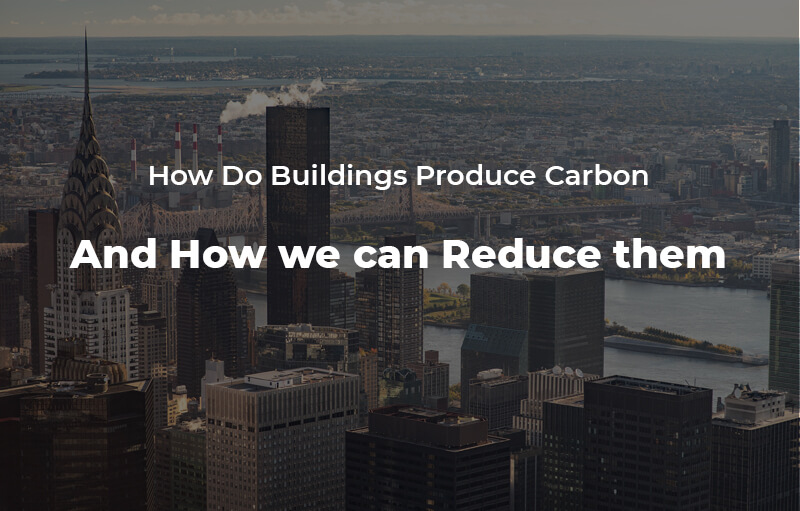
05 Aug How Do Buildings Produce Carbon? And How can we reduce them?
It’s plausible that the first thing that comes to mind after hearing ‘air pollution’ is not buildings. Perhaps it’s the transport sector, especially with carbon pollution. However, as per the latest academic advancements, the real estate sector has reported a bigger carbon footprint as compared to other sectors such as transportation, although it’s less apparent.
Buildings have reported carbon pollution of up to 39% according to the latest findings of the US Green Building Council, whereas the transportation sector is responsible for 33 and the infamous industrial sector for 29%. There are two types of carbon emissions that a building produces – direct and indirect.
Understanding Building Emissions
This is how a building emits carbon
“Carbon emissions or carbon footprint of a building is measured by totaling the carbon dioxide that is emitted into the atmosphere during the production of the energy that is consumed by a building for all its operations.” The emissions are usually a result of fuel combustion. They occur on-site as a result of an oil/gas boiler and off-site perhaps at a power plant to generate current.
The United Nations Environment Program accounts for at least 39% of global energy use by buildings. As for the US, it’s the residential & commercial or privately owned buildings that contribute to approximately 40% of energy consumption (US Energy Information Administration).
The building emissions are essentially compartmentalized into two – “operational building emissions” (28%) & “embodied carbon of a building” (11%)
Direct Building Emissions
When the building release carbon dioxide from directly used equipment that functions on combustible properties constitutes the direct emissions. Below are some common examples.
1. The boilers and furnaces that are used to heat spaces and that consume fuels such as natural gas and heating oil directly pollute the air around with carbon among other toxins and are known to have the highest carbon footprint as well. Given the large footprint, only natural gas and lighter heating oil are permissible by the authorities.
2. The water heaters also rely on fossil fuel combustion for heating requirements. However, in this landscape, heating also depends on the load where heaters with a storage tank use function on more energy as compared to tankless instantaneous heaters, and they produce higher emissions too.
3. In cases where the energy input is that of fossil fuel, onsite power generation can also contribute to building emissions severely. For instance, diesel generators and steam microturbines – both produce undesirable emissions but the negative impact per kilowatt-hour has been reported to be higher with diesel.
It’s important to note that all the abovementioned functions can be accomplished without burning fossil fuel combustion, simply by electrifying most processes. If pocket permits, renewables or alternative energy sources can also be looked into such as wind turbines or solar photovoltaic systems.
Indirect Building Emissions
Not all emissions can be sources in and around the building or even locally. If there is a property under you where all the heating systems function on energy-efficient heat pumps, with no emissions being produced locally – but the electricity supply comes from power stations that are fired by fossil fuels such as natural gas and/or coal, the heating systems are still producing emissions indirectly. The concept of indirect emissions also extends to other processes such as extracting.
The first step to decarbonization, therefore, is electrification because it tackles the problem at the source by removing local emissions. While it’s the preliminary big step, complete decarbonization requires a transition to clean power sources to mitigate the impact on the planet and human health.
In the modern discourses and context, energy efficiency is not just about human and climate impact, it is also about financial returns as the action is reflected in increased savings that end up covering the initial charges of switching to efficiency.
